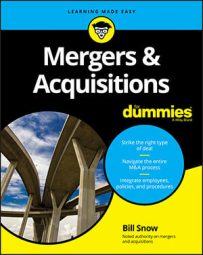Immediately following the signing of the M&A Letter of Intent (LOI), the Buyer will need access to information about all aspects of the company’s business to do her due diligence. In order to help the Seller get prepared to provide access to that information, here is a comprehensive list of the physical asset documents that could apply to your deal.
Real estate and facilities
Schedule of the company’s business locations.
Listing of all owned or leased real estate including location, date, term, termination rights, renewal rights, rent amount, unusual provisions (for example, purchase options), and existence of defaults or breaches.
Copies of all real estate appraisals, leases, deeds, mortgages, title policies, surveys, zoning approvals, variances, or use permits.
Listing of current and pending construction in progress, including date commenced, expected completion date, and further required financial commitment to complete.
Fixed assets
Schedule of fixed assets, owned or leased, to include description, date acquired, price, depreciation years, accumulated depreciation, net book value, and location.
Copies of any equipment appraisals performed during the reporting period.
Copies of all U.C.C. filings.
Schedule of sales and purchases of major capital equipment during the reporting period.
Schedule of unpaid balances and open purchase commitments for any capital equipment.
Listing of any surplus or idle equipment and the dollar value of such equipment.
Copies of any vehicle registrations.
Inventory and costing
Inventory listing (by location if applicable) including item description, item number, date, units, and cost for the most recent year-end and month-end.
Description of practices regarding inventory aging, valuation, and obsolescence and any methodology changes during the reporting period and the related effect on reported performance.
Details of inventory reserves and/or write-offs during the reporting period.
Summary of physical inventory count results (by location if applicable), including explanation of significant book-to-physical adjustments for the most recent year-end and month-end.
Details of any consigned inventory arrangements.

